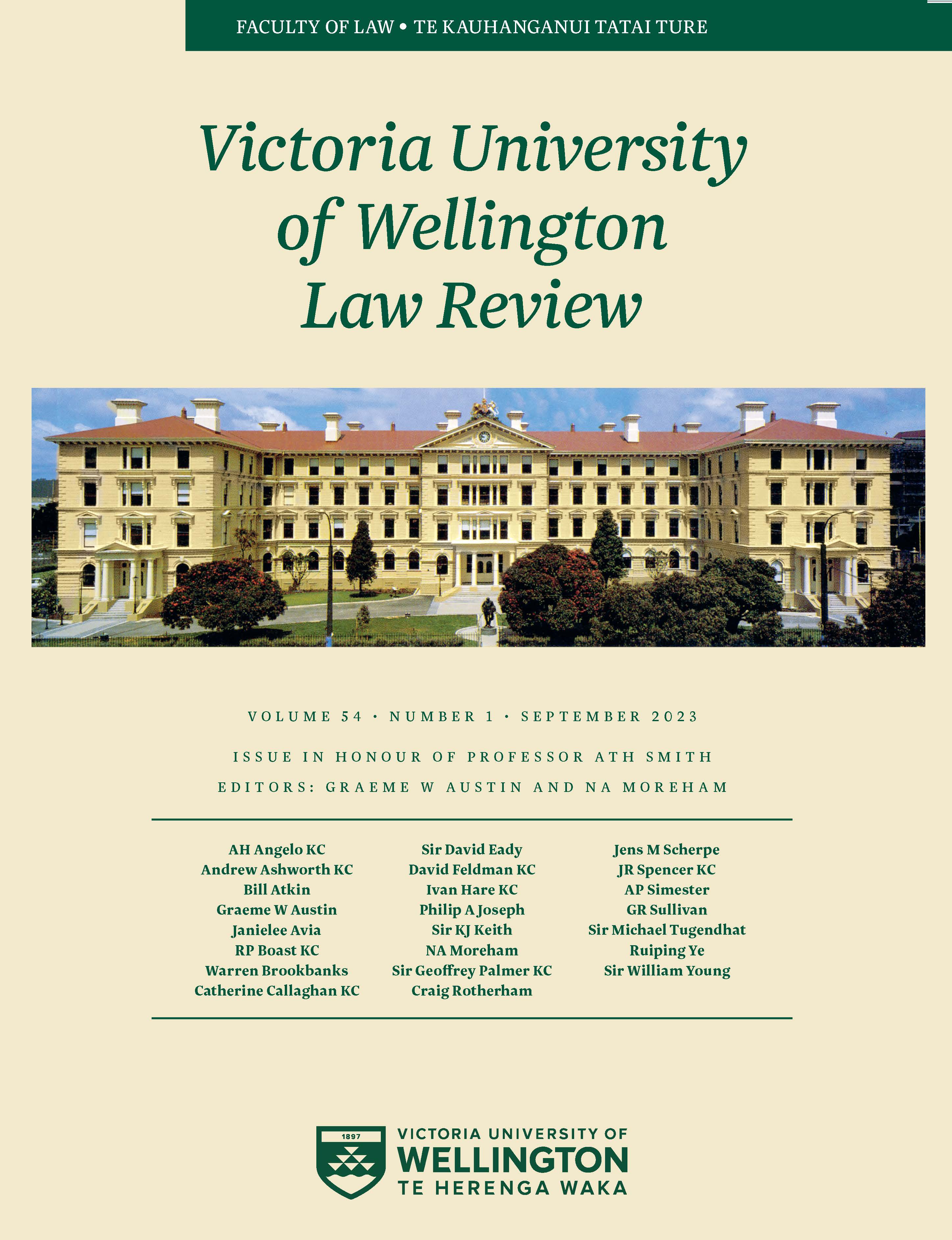The Dance of Legislation: Why Parliamentary Sovereignty is not a Meaningful Public Law Metric
DOI:
https://doi.org/10.26686/vuwlr.v54i1.8442Abstract
"The dance of legislation" is a metaphor to capture the parliamentary–judicial dynamic in the creation, interpretation and application of legislation. Contrary to the edicts of classical sovereignty doctrine, Parliament is not the sole actor in (what I term) "law creation through legislation". Sovereignty doctrine champions the exclusivity of Parliament in enacting legislative text and discounts any constitutive role of the courts in bringing meaning to the legislative text. The courts deploy interpretive techniques that fix legal meaning in accordance with a range of institutional norms and understandings. These techniques debunk the notion that Parliament's word is the start and end point of what is law, irrespective of what the courts say is the law. The judicial role extends beyond filling gaps in statutory meanings: it extends even to the reconstruction of statutory meaning where institutional norms commend activist interpretive method. The symbiosis that joins the branches lies at the heart of the legislative enterprise. The parliamentary–judicial relationship is an interdependent, collaborative one that draws upon the distinctive, role-specific function of each branch. The quip "it takes two to tango" speaks perfectly to the dance of legislation imagined in this article.
Downloads
Downloads
Published
How to Cite
Issue
Section
License
Authors retain copyright in their work published in the Victoria University of Wellington Law Review.


